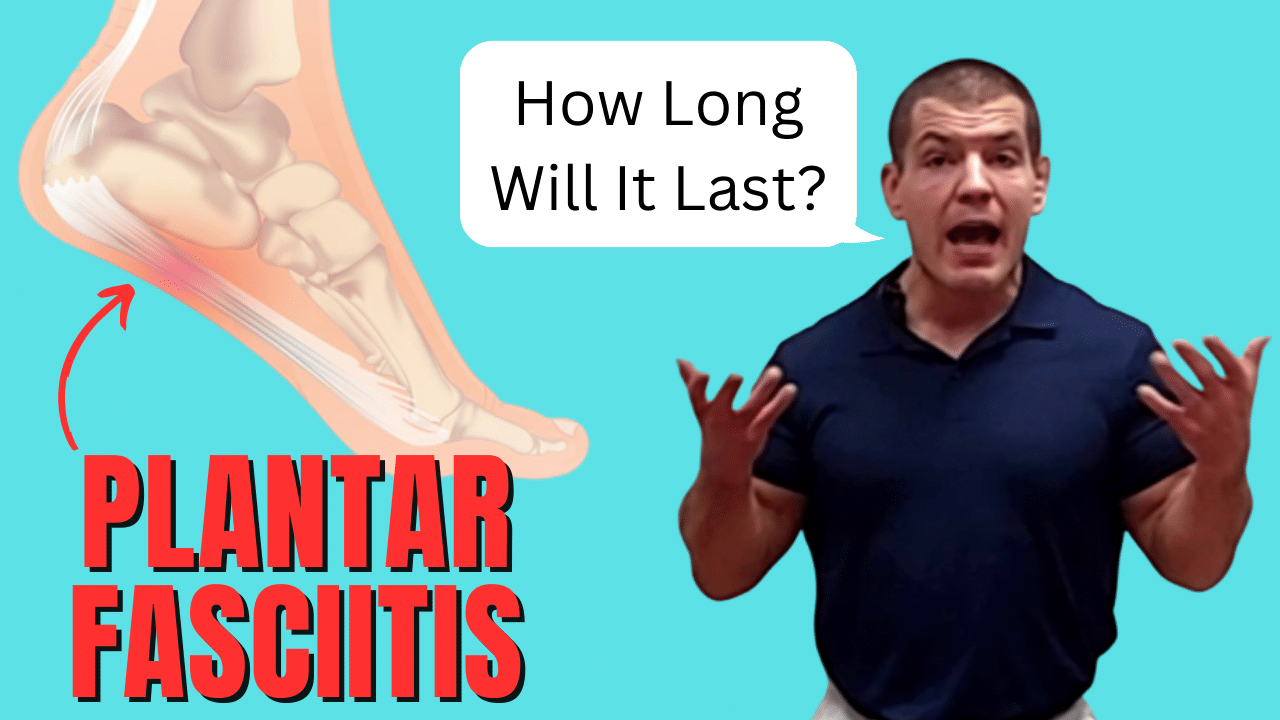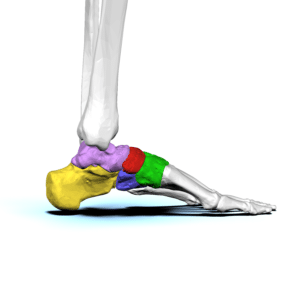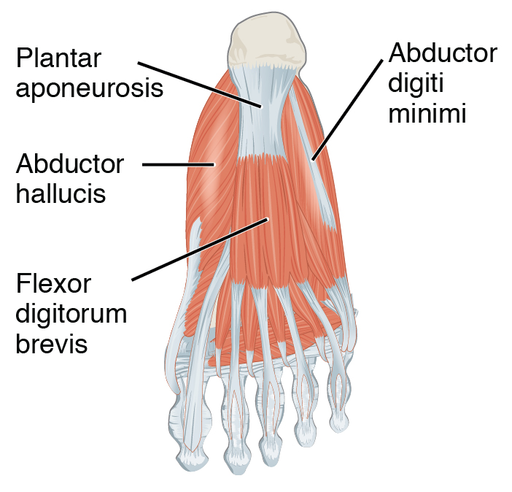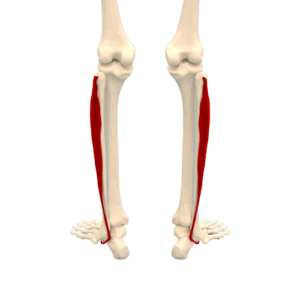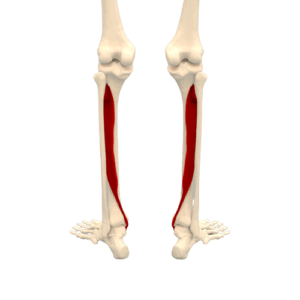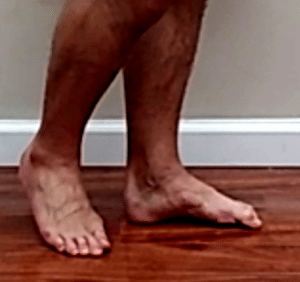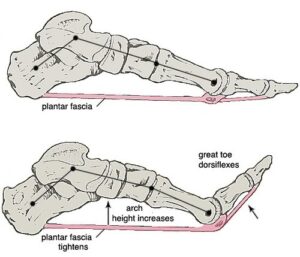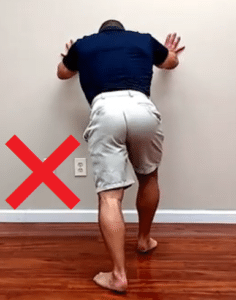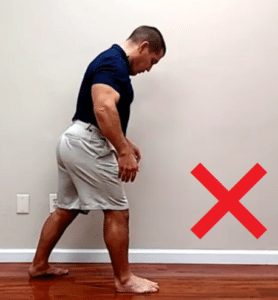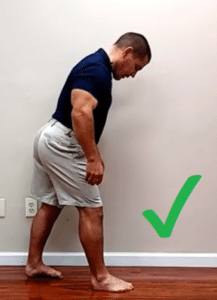Many people think that plantar fasciitis lasts a long time. However, that doesn't have to be the case for you. Watch the video to learn how long plantar fasciitis lasts, and how you can speed up your recovery.

How Long Does Plantar Fasciitis Last?
If you have plantar fasciitis, probably one of the biggest concerns on your mind is "How long is it going to last?"
A lot of physicians will tell you that plantar fasciitis will spontaneously resolve on its own, but that it takes a long time.
It is true that sometimes, after 12 or 18 months, the symptoms of plantar fasciitis will just go away.
But the bad news is:
- That's a really long time to suffer if you've got foot pain.
- Plantar fasciitis that just goes away on its own without doing anything about it is subject to coming back.
That's because you never really fixed the underlying problem.
The symptoms just went away.
Now the good news is that that doesn't have to be the case for you.
In the rest of this post, I'll explain how long plantar fasciitis lasts, what you can do to speed up your recovery process, and how you can fix the problem for good so that it doesn't keep coming back.
So How Long DOES Plantar Fasciitis Last?
Plantar fasciitis lasts for as long as you continue to do things to aggravate it.
Imagine if you took a hammer and you hit your thumb.
It would probably hurt, right?
Now imagine you continued to do that and you did it 3,000-10,000 times per day.
How long do you think your thumb pain would last?
Probably a pretty long time, right?
Well, we do the same thing every day when we're walking.
We take thousands of steps each day landing on our feet.
Now that doesn't mean that you have to stop walking or running.
It just means that if you're walking with mechanics that are aggravating your plantar fascia with every step you take, your symptoms will last until you fix those problems.
No amount of stretching or exercising or rolling your foot with a tennis ball or a cold water bottle can out-do 3,000-10,000 steps a day of walking wrong.
So that's one of the main problems that you need to fix if you want to get rid of your plantar fasciitis fast and get rid of it for good.
How To Heal Plantar Fasciitis Faster
Well, to understand and how you fix your walking problems, you have to first understand what walking problems cause plantar fasciitis in the first place.
I'm going to explain a couple terms here that are relevant to plantar fasciitis:
When you're walking, your foot goes through a cycle of pronation and supination.
- Pronation - flattening of your arch to make it a flexible shock absorber.
- Supination - raising the arch in order to make it a rigid lever to push off.
Pronation and supination are both normal movements.
You need both of them for proper mechanics of your foot.
But you don't want to overpronate or excessively pronate, or oversupinate (underpronate).
So let's first start out with the oversupination or underpronation problem because that's the less common problem.
And then I'll go more in depth into the overpronation problem, which is by far the more common problem that causes plantar fasciitis.
Plantar Fasciitis From Oversupination (Underpronation)
Oversupination means that you're not pronating enough as you're loading weight down onto your foot.
Pronation allows your foot to act like a shock absorber.
The natural arch of the foot is meant to absorb shock as you put your weight down on the ground.
BodyParts3D is made by DBCLS., CC BY-SA 2.1 JP, via Wikimedia Commons
When you load weight down on your foot, your arch is supposed to give a little bit.
That arch is supposed to flatten a little bit, and that helps absorb shock so that it doesn't move up your body.
If you're not pronating enough, then all of the ground impact force takes place at your heel, the contact point in your foot.
Then it goes up through your knee, your hip, and your lower back.
Heel striking also puts a lot of pressure on the attachment of the plantar fascia right at the calcaneal tuberosity, the bump right on your heel.
Additional Tips For People With High Arches
Now, another thing that can be really helpful for people with a high-arched foot is hitting more on the midfoot, or hitting with your heel and the balls of your feet at the same time.
You've got essentially three functional contact points:
- Your heel
- The base of your first toe
- The base of your fifth toe
Those 3 points form a tripod that allows your arch to have both mobility and stability at different points of your walking cycle.
When you spread your weight out over 3 points instead of just one, you don't get all of the impact force right at the attachment of your plantar fascia.
So that's the oversupination problem or underpronation where your foot isn't absorbing shock well enough.
Plantar Fasciitis From Overpronation
Overpronation is the farm more common problem, where your foot flattens out too much.
There are a lot of factors that contribute to overponation.
Hip Weakness
Weakness in your hip abductor muscles causes your knee to go inward, which in turn flattens your foot.
And so getting your hips stronger is one thing that will help you to control overpronation.
Lower Leg Muscles
The lower leg muscles such as your tibialis posterior and your fibularis longus and brevis control your ankle position as well as support your arch.
Intrinsic Foot Muscles
The small muscles in your foot also help support your arch.
How To Walk Properly To Stop Plantar Fasciitis From Overpronation
When you're walking, if you dome your arch by kind of shortening your foot and curling your toes a little bit, that reforms your arch and gives your foot more stability.
So when you're walking, take a step, dome the arch take a step, dome the arch, etc.
You don't want to over-supinate either.
You want to stay somewhere between maximum pronation and maximum supination.
So when you walk you should get a little bit of pronation as you're loading weight on your foot to absorb shock.
Then you supinate again to make your foot a rigid lever to push off.
This happens by a mechanism known as the windlass mechanism.
How Do You Loosen A Tight Plantar Fascia?
You don't... or at least you shouldn't.
You should have a tight plantar fascia.
It helps make your foot rigid enough to push off using the windlass mechanism shown above.
However, one of the common things that people will do for plantar fasciitis is massage it with a tennis ball or a water bottle.
But you actually want your plantar fascia to be tight.
Furthermore, if you've injured your plantar fascia, meaning that you've overstretched or torn it from overpronating, then the last thing that you want to do is stretch it even further.
Is using a tennis ball good for plantar fasciitis then?
There are some good benefits of rolling your foot with a tennis ball.
It massages some of the little muscles in your foot and it mobilizes some of the joints that make up your arch.
So there's not necessarily anything bad about massaging your foot with a tennis ball or a golf ball.
But just note that you don't need to do it as hard as possible to stretch your plantar fascia because really, you want your plantar fascia to be tight.
What Else Makes Plantar Fasciitis Heal Faster?
It is important to do calf stretches, which are one of the first-line treatments that almost any doctor or any physical therapist will give you.
However, many people don't stretch their calves properly.
If you stretch with your heel off the edge of a step, or even if you do a runner's stretch, if you allow your foot to pronate or flatten as you're stretching, then you're playing into the overpronation problem that caused your plantar fasciitis in the first place.
So when you're doing your calf stretch, you need to stretch it in the position that you want your foot to be in when you're walking.
Start out by doming your arch just like you would to take a step and keeping that arch lifted as you stretch.
You may notice that you can't stretch nearly as far with your arch lifted like this.
In fact, if you have REALLY tight calves, you may feel a stretch even just doming your arches while standing.
If you have a little bit more flexibility in your calves, then you can take a small step with your arch lifted, but only stretch as far as you can WITHOUT allowing your arch to flatten or allowing your toes to turn out.
What About Other Exercises For Plantar Fasciitis?
Exercises are really just a mechanism to improve your functional mechanics or your walking.
Both calf stretches and strengthening exercises are really just meant to improve your functional mechanics when you're walking.
So it's great to have good calf flexibility, and it's great to have strong feet from doing towel curls or just practicing standing on one leg with your arch lifted.
Those are all great strengthening exercises for plantar fasciitis.
But again, no amount of exercise that you do is going to overcome 3,000-10,000 steps a day of walking with poor mechanics.
So, to review correct mechanics of walking again, you want to hit with your heel and ball of your foot at the same time.
Don't walk heel to toe.
I know that flies in the face of a lot of things that you may have been told before by doctors or physical therapists. Try it out for yourself and see what works best for you. Then stick with what works.
So again:
Walking Mechanics To Heel Plantar Fasciitis Faster
- Hit with your toes and heel at the same time with the arch lifted.
- Allow a little bit of pronation, but not excessive amounts of pronation.
- Push off from your big toe.
- Repeat.
You'll notice that your walk is much quieter when you walk this way.
If you're a runner, it's even more noticeable. So try running with a midfoot strike if you have heel pain when running and see if it helps.
Conclusion
Hopefully you found these tips helpful so that your plantar fasciitis doesn't last as long.
Additionally, getting hands-on treatment for your plantar fasciitis to release stiff muscles in your calves, mobilize joints in your ankle and in your foot, and to help you get your hips stronger so that you can walk or run with proper biomechanics, it is a good idea to see a physical therapist.
And if you happen to be in the St. Louis area, we'd be happy to help you out with that here at More 4 Life. Just tap the button below to request an appointment with one of our specialist physical therapists.
Like this post? Check out some of our other posts about foot pain and plantar fasciitis.
When Is Foot Arch Pain Not Plantar Fasciitis?
How To Relieve Pain In Foot In The Morning

